The anti-melanoma roles and mechanisms of tricholoma isoflavone derivative CA028
- PMID: 39788977
- PMCID: PMC11718060
- DOI: 10.1038/s41538-025-00370-6
The anti-melanoma roles and mechanisms of tricholoma isoflavone derivative CA028
Abstract
As a form of skin cancer, melanoma's incidence rate is continuing to rise globally. Therefore, there is an urgent need to find new agents to improve survival in melanoma patients. Isoflavones, a class of phytoestrogens, are primarily found in soy and other legumes. Cumulating evidence demonstrates that isoflavones exhibits significant anti-tumor properties and is beneficial for the prevention and treatment of melanoma. In the present study, we aim to investigate the anti-melanoma role of tricholoma isoflavone derivative CA028. By using in vitro melanoma cell line models, A375 and A2058 and in vivo xenograft mouse model, our results indicate that melanoma proliferation, migration, and invasion are attenuated following CA028 treatment. In addition, the treatment of CA028 induced cell apoptosis of melanoma. Finally, we addressed the mechanism of CA028 against melanoma by comparative transcriptomic analysis. The results of gene ontology highlighted the involvement of CA028's targets in the cell proliferation, cell apoptosis, and migration ability of melanoma cells. Furthermore, Ingenuity Pathway Analysis constructed the network involved in the apoptotic roles of CA028 through targeting p53 signaling and death receptor signaling. For the first time, our data suggested the possible use of modified isoflavone for therapeutic applications against melanoma.
© 2025. The Author(s).
Conflict of interest statement
Competing interests: The authors declare no competing interests.
Figures
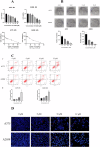
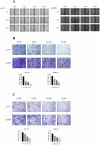
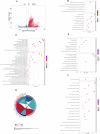
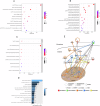
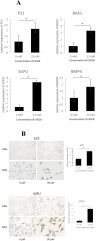

Similar articles
-
Prosopis juliflora (Sw.) DC phytochemicals induce apoptosis and inhibit cell proliferation signaling pathways, EMT, migration, invasion, angiogenesis and stem cell markers in melanoma cell lines.J Ethnopharmacol. 2023 Aug 10;312:116472. doi: 10.1016/j.jep.2023.116472. Epub 2023 Apr 14. J Ethnopharmacol. 2023. PMID: 37062530
-
Luteolin inhibits proliferation and induces apoptosis of human melanoma cells in vivo and in vitro by suppressing MMP-2 and MMP-9 through the PI3K/AKT pathway.Food Funct. 2019 Feb 20;10(2):703-712. doi: 10.1039/c8fo02013b. Food Funct. 2019. PMID: 30663726
-
Study on the apoptosis of human melanoma cells induced by solanine in vitro and its mechanisms.Arch Dermatol Res. 2024 Dec 30;317(1):163. doi: 10.1007/s00403-024-03665-y. Arch Dermatol Res. 2024. PMID: 39738917
-
Anti-cancer mechanisms of natural isoflavones against melanoma.Heliyon. 2024 Mar 27;10(7):e28616. doi: 10.1016/j.heliyon.2024.e28616. eCollection 2024 Apr 15. Heliyon. 2024. PMID: 38586368 Free PMC article. Review.
-
Dietary soy-derived isoflavone phytoestrogens. Could they have a role in coronary heart disease prevention?Biochem Pharmacol. 2000 Jul 1;60(1):1-5. doi: 10.1016/s0006-2952(99)00409-8. Biochem Pharmacol. 2000. PMID: 10807939 Review.
References
-
- Carr, S., Smith, C. & Wernberg, J. Epidemiology and risk factors of melanoma. Surg. Clin. N. Am.100, 1–12 (2020). - PubMed
-
- Sung, H. et al. Global Cancer Statistics 2020: GLOBOCAN estimates of incidence and mortality worldwide for 36 cancers in 185 countries. CA Cancer J. Clin.71, 209–249 (2021). - PubMed
Grants and funding
LinkOut - more resources
Full Text Sources
Research Materials
Miscellaneous

